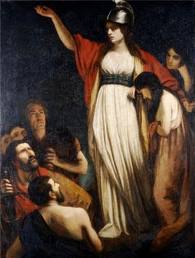
MATRIARCHAL SOCIETIES
A look into various existing Matriarchal Societies such as the Nagovisi, Garo, Machiguenga and Mosuo. We will also be exploring various Matrifocal and matrilineal societies such as the Khasi and others in Africa, Arabia, Asia, India, Europe and North America among other places. Let us begin with a most obvious question:
WHAT IS A MATRIARCHAL SOCIETY?
The Nagovisi
The Nagovisi are one of three tribes of South Bougainville, a large tropical island west of New Guinea and north of Australia. Jill Nash and her husband Donald D. Mitchell are the anthropologists of Nagovisi, among whom they have done field work in several periods from 1969 to 1973. Jill Nash tells:
“Food production in Melanesia is the basis of all wealth and, in addition to its obvious life-sustaining nature, its connection to the small family-group, its political uses, and its connections to conspicuous display and consumption at large political gatherings cannot be ignored. Women, of course, dominate in food production.”
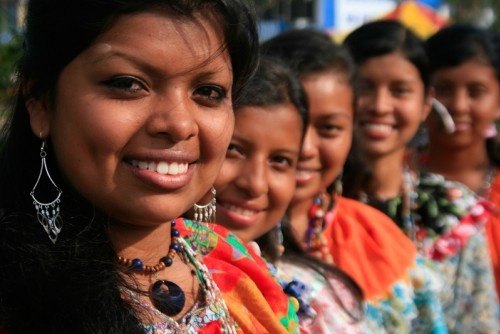 Women are the garden authorities who cultivate sweet potatoes and other food stuff, and their husbands only help them in heavy tasks like clearing the land for a new garden. “There is strong feeling that shared garden labour is almost as much a part of marriage as is shared sexuality.”
Women are the garden authorities who cultivate sweet potatoes and other food stuff, and their husbands only help them in heavy tasks like clearing the land for a new garden. “There is strong feeling that shared garden labour is almost as much a part of marriage as is shared sexuality.”
“Widows are sometimes denied assistance in clearing, to encourage them to remarry.” Women work in their gardens three times a week, and husband’s attendance is not always necessary. “One seventy-year-old groom (a former widower), who insisted on accompanying his aged wife on every garden trip, was the butt of many jokes.”
“Every adult woman has the inalienable right to use some of her descent group’s land for food gardens and to transfer title to her daughters.”
Men are dependent on women’s cultivation for food; women take pride in their gardening responsibilities. “Anyone other than a bride feels ashamed to ask another person – even a relative – for sweet potatoes.” If a couple quarrels, the man will stop eating coconuts from his wife’s trees, sometimes because she forbids him to eat them, and sometimes because he chooses to avoid them. A conciliatory act (usually the gift of a pig) is required. Usually the wife has to give the compensation. A refusal to eat anything from the garden would mean divorce.
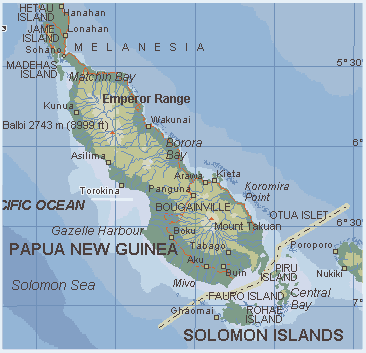 To the Nagovisi, a good marriage means to garden industriously, raise many pigs, and give big feasts. Because marriage is a relatively flux institutions, the signs of marriage are that the couple sleeps in the same house, the couple walks around together, and the man works in the woman’s garden. They consider sex equally pleasurable for men and women.
To the Nagovisi, a good marriage means to garden industriously, raise many pigs, and give big feasts. Because marriage is a relatively flux institutions, the signs of marriage are that the couple sleeps in the same house, the couple walks around together, and the man works in the woman’s garden. They consider sex equally pleasurable for men and women.
The Nagovisi are comprehensively divided into two society-wide exogamous and totemic matrilineal moieties (halves), which are divided into numerous land-owning matriclans, which are themselves subdivided into localized, land-using matrilineages. The latter retain their localized character through uxorilocal residence (the practice, wherein a man, upon marriage, goes to live in the home community of his wife).
In addition, the clans and lineages of the Nagovisi are the owners of other kinds of valuables, including shell money, and they were the focal points of most religious rituals and of much political influence. The shell money is kept as strands of shell disks or beads. Among Nagovisi the finest are heirloom jewelry, given from mother to daughter; the second best form is used in buying pigs, in marriage exchanges (if there were any), and in compensation for insult, injury, or death.
Nagovisi women share leadership with men; a strong matrilineage system having political functions exists, with women playing significant roles in decision making and ceremonialism. Nevertheless, they have a dislike of chiefs and communal efforts. “The Nagovisi indicate their opinion of leaders in the often repeated joke that the greatest ‘big man’ of all is ‘ma’, shit, because only that can make you leave your warm bed on a cold rainy night.”
Jill Nash summarizes the status of women: “If all we want to know is that women in some societies are not under the oppressive control of men, that they can own property and exercise their rights over it freely, and that they can enjoy their work, even when it is not an exciting career, I can do no more than offer the evidence of Nagovisi women, for whom, I believe, all of this is true.”
The Nagovisi are one of three tribes of South Bougainville. The two others are interestingly different in their social organization. The Siuai are a typical Big Man society where matrilineal clans and lineages regulate marriage, land tenure, etc., but men make use of their own matrilineage property. The Buin have a hereditary system of stratification, they dwell closest to the shore and outside contacts.
Theirs is a male-dominated society with some polygynous marriages, and chiefs have slave-girls who serve as prostitutes during feasts. No stigma is attached to prostitution, though, and girls later marry. Men are brutal against wives, even infanticide has been practised. A sexual antagonism unlike among the Nagovisi is prominent. Also feast giving, trading and war are more developed among Siuai and Buin than Nagovisi.
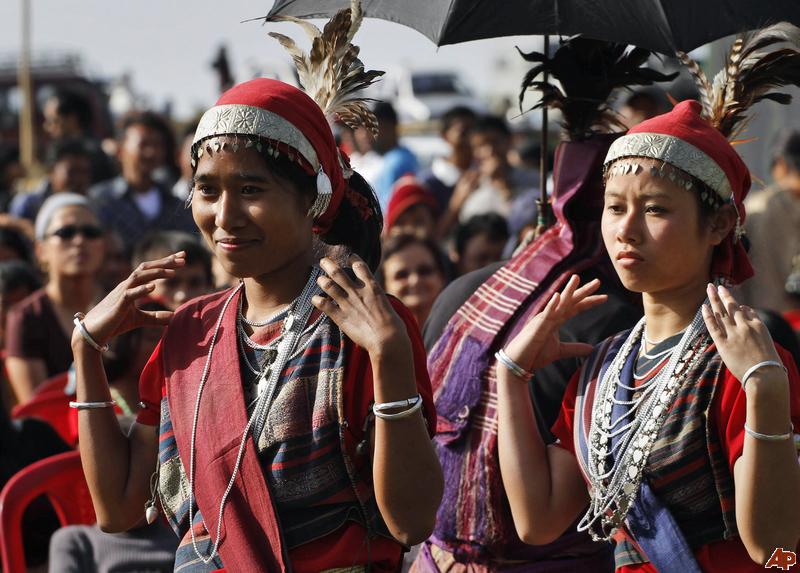
The Garo
The Garo (as well as the Khasi) are agricultural peoples who live in hill districts in Meghalaya state in North-Eastern India. They practice wet rice (paddy) agriculture. As opposed to the Aryan Indians, they speak a Tibeto-Burman language. They are known as hospitable, mild and well humoured people. Both inheritance of property and succession to tribal office run through female line, passing from mother to youngest daughter.
Among the Garo, one daughter, usually the youngest, is chosen as heiress. For the heiress, the husband is selected by her parents, and the groom ceremonially captured – the groom may even run away twice. The youngest son-in-law comes to live in his wife’s parents’ house and becomes his father-in-law’s nokrom, or clan representative in the mother-in-law’s family.
If the father-in-law dies, the nokrom marries (and the marriage has to be consummated) the widowed mother-in-law, thus becoming the husband of both mother and daughter. This custom is now falling into disuse. The Garos usually live as extended families in large longhouses.
Other girls select their own husbands. ‘Initiative is always taken by the Garo girl. Boys behave demurely and fight shy of entering into wedlock without social pressure.’ However, no able-bodied adult must remain without mate; replacement marriages are arranged in case of death or dissolution of the marriage.
Incompatible marriages can be dissolved; and illegitimately born child suffers no indignity (as the parents may marry anyway soon) if it is not a sequence of an incest within the same lineage. Marriages are exogamous, that means that the husband belongs to another matrilineage than the wife.
The managerial head of the land of the Garo lineage is the husband of the ‘matron’. Village council is formed by all the adult male members of the village.
An excellent source of information and pictures about hill tribes of northeast India (including the Khasi):
Stirn, A. & van Ham, P.: The seven sisters of India. Tribal worlds between Tibet and Burma.
Prestel books 2000.
ISBN 3-7913-2399-7
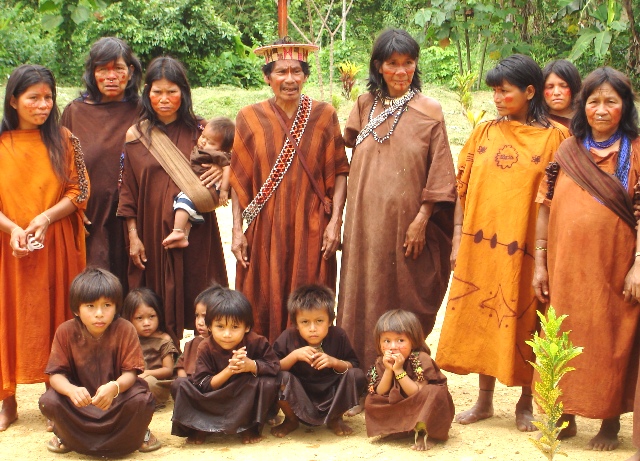
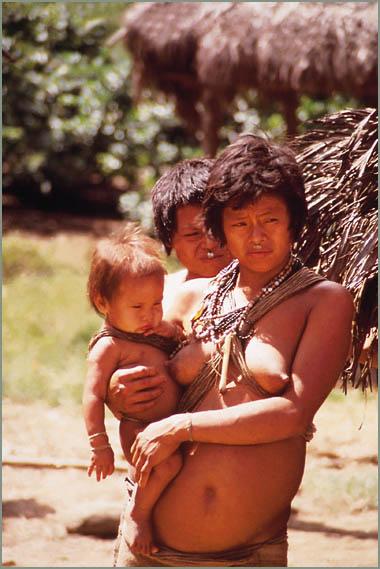
The Machiguenga
Orna and Allen Johnson have studied the Machiguenga people of Peru, who live in the rainforest east of Cuzco, and speak an Arawakan language (11,000 speakers). They live in marginal areas deep in the jungle, in small hamlets of three to five households, together only 20-35 members. They practise slash-and burn agriculture, from which they get their subsistence because of the scarcity of fish and game in their area.
A Machiguenga myth tells how a young husband goes to live with his wife after his oncle arranges their marriage against father’s will. This may be how it was earlier, but at present however, marriages are neolocal – which means that the couple builds a house of their own. Women are in charge of the cultivation and men help their wives in horticulture. Women form co-operative groups but men very seldom.
There are no male interest groups. Men come together only sporadically for beer feasts and poison-fishing, which are organized by an influential shaman.
Machinguenga family life is peaceful. Males are typically quiet, reserved, and generous with their kin. A man is loyal to both his family of origin and procreation. Men have affectionate relationships with their mothers and sisters, as well as wives and children. Fathers take care of their sons. People are shy about sexual matters and adultery is not common.
A Machiguenga man is not expected to be violent and aggressive. Men who are “plenty-the-male-is” are avoided, even driven off or killed. Warfare is rare. This has been a mixed blessing during the 1990’s, when the Shining Path guerillas and militias entered their grounds and made it their battlefield. Many villages have been destroyed and their inhabitants killed or captured.
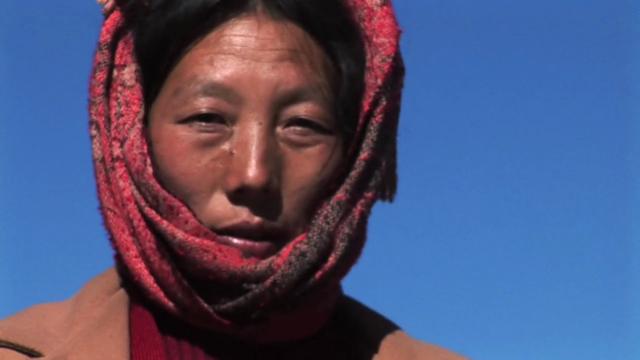
The Mosuo
In the Xiaolianghshan Mountains, Yunnan province (South East China), live the Mosuo people, one of the last living matriarchal societies today. They are closely related to Tibetans. In their social system, paternity and marriage are not the same as in our world. The main pillar of the family is the mother.
The family units can join three women generations with their sons. Grandmothers, mothers and daughters can inhabit the same house, without the presence of fathers or husbands. Only uncles, brothers, sons and nephews are happily accepted.
Sex is practiced freely. They only have to choose a partner to spend the night and only incest is forbidden. Typical marriage and fidelity are something like heresy. Obviously, they don’t seem to present signs of jealousy. The western love tragedies of revengeful and victimized lovers make them laugh. They think the visitor is kidding them “How is it possible to end your precious life for something so banal like sex?”
Otherwise, in the Mosuo language doesn’t exist the word “rape” – even if rape does exist – but is less common than in other cultures. The woman is clearly the center of this culture.
Mosuo homes are designed as four rectangular structures, with an open central courtyard. Animals and humans will live together in this home, with much of the first floor dedicated to housing for the livestock (yaks, sheep, goats, water buffaloes, horses, geese, poultry, pigs). It is common to have animals wandering in and out of the house all day. The first floor will also have the main cooking area, and the main eating/visiting area. The second floor is used most commonly for storage, and for the private rooms for Mosuo women! (the rest of the family will sleep in communal quarters).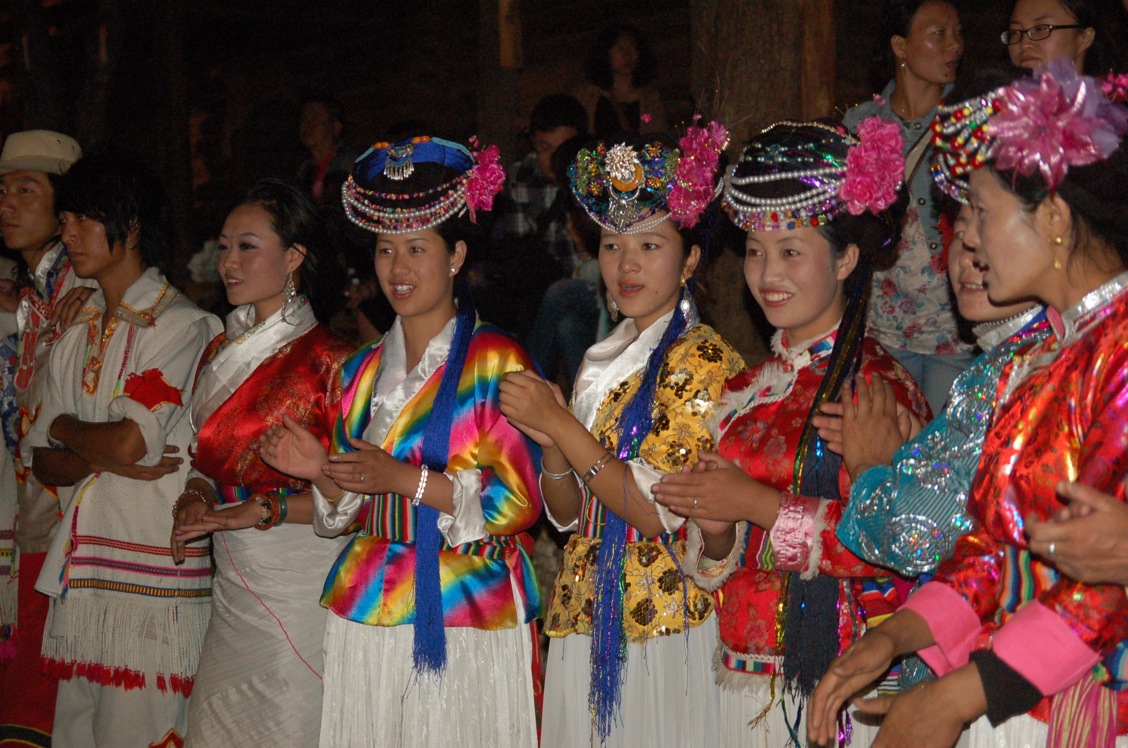
Women and men are grouped in “clubs”. When two young people are attracted by each other, they start a relationship, working together, having social activities and rejoining every evening in a big party center to sing and dance together. The boys give girls gold, silver or jade jewelry or silk fabrics. The girls donate wood or leather accessories. Older men can also give as presents salted meat, green tea, sugar or wine to young women, in order to achieve the probation of the old women.
Once achieved, they are engaged or – properly said – they are a couple. We talk about “walking marriage”. They won’t live together, but instead, they will spend from time to time the night together, all wrapped in secrecy. And at the woman’s will. The men will walk to the house of their ‘partner’ at night, but return to their own home in the morning.
Even if they have sons, he is not a father in the meaning given in our society. He is just the biological father, a procreation tool. The sons belong to her family and the father can only visit them. The uncles deal with their education, care or admonishment, but always with less authority than the mother. Reversely, the children have to care their old uncles.
Traditionally, a Mosuo woman interested in a particular man will invite him to come and spend the night with her in her room. Such pairings are conducted secretly, so the man will walk to her house after dark, spend the night with her, and return home early the next morning.
Few Mosuo women will have more than one partner at a time, even if they are not expected to do so. Mosuo women can change partners as often as they like. In fact, they practice “serial monogamies”, and some relationships can last for a lifetime. So they are not a culture sexually promiscuous as one might think. And “walking marriages” with non-Mosuo are very strongly forbidden.
Mothers are responsible with the family, but they also decide the inheritances and pass the family name. None can interpose a woman’s authority and even less a man. Of course, they are “ruled” by a queen, 77 years old now. She is more beloved and respected than venerated. This brave woman faced the Chinese communist regime and was subdued to “reeducation classes” and spent 20 years in prison.
Mosuo religion is a mix of Tibetan Buddhism and its own animistic believes, called Daba. The greatest Mosuo holiday is the Moon New Year. The families kill a pig which is salted and smoked over the roof of their houses. The meat amount over the roof represent the richness of the family living bellow that roof. Mosuo are famous for their way of preparing pork, and the meat treated this way can hold 10 years. All the Mosuo working or studying outside come back for this event when great quantities of a kind of strong wine are consumed.
Political power in Mosuo society tends to be in the hands of males, which for many scientists disqualifies them as a true matriarchy, and they would be rather called “matrilineal”. The result of the Mosuo system is an extremely stable family structure. There are no divorces, child custody (the child belongs to the mother’s family), splitting of property (property is never shared) etc. The large extended family provides care to the child if a parent dies.
There is no preference for a particular gender. In most cultures the female will join the male’s family when she gets married. A couple with many female children will lose them after marriage, and have no one to care for them in old age; if they have male children, their sons (and their sons’ wives) will care for them and this results in a strong preference for male children.
Among the Mosuo, since neither male nor female children will ever leave home, there is no particular preference for one gender over the other. The focus instead tends to be on maintaining some degree of gender balance within a household, even by adoption or “children change”.Tourism has begun to boom in China and the influences of the outside world will be felt.
Mosuo area offers an amazing landscape, beautiful overviews and a hospitable ethnic group with its customs, varied folklore and costumes. Mosuo are really hospitable, offering their houses to the tourists. Moreover, this is maybe the only site in the world where the almost extinct matriarchal system can be contemplated.
With all their fidelity to the traditions, things are changing very quickly, and it is not that uncommon to find at least one or two homes in a village that will have a satellite antenna in their courtyard. Change has a significant impact on Mosuo culture. The cash-based trading system started to leave behind the traditional barter economy.
Many younger people seek to leave home to work in larger cities; and many younger people are renouncing their language or culture. On the other hand, many Mosuo are very proud of their culture, and still practice many of their traditions.
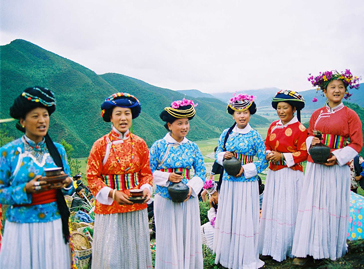
Matrifocal Societies and Matrilineal Societies
The Khasi
The Khasi are agricultural peoples who live in hill districts in Meghalaya state in North-Eastern India. They speak a Mon-Khmer language and are known as mild mannered and hospitable people.
In the folktales of the Khasi, the earth Ka Blei is the mother of celestial bodies, fire and water. The sun is her daughter and the moon her son. Because of his bad behaviour against his sister, the moon was punished and his face tainted by soot forever – a very similar story to the legend of the Japanese sun goddess Amaterasu and her unruly brother. The Earth Goddess has a prominent position in the religion of Meghalaya and Assam, she is often revered in the form of the Hindu goddess Durga.
A Khasi clan mother is viewed as the wordly equivalent of the Primal Mother, Ka Blei. She is the most important person of the community, its chief and priestess, who administers the clan property. The high priestes of the village of Smit is the most powerful shaman in Northeast India, and she selects the dates of important ceremonies and appoints Khasi village chiefs.
Every young Khasi girl takes part in a ceremonial dance where she absorbs the powers of the earth: girls dance in a large square protected by youths who wave yaks tails to keep evil spirits away. The girls’ postures remain upright while the only movement is the rolling of their feet from heel to toe thus absorbing power from the earth. The forces flow through the spine into their heads. Later in their lives they need these forces to fulfill their role in the society as women and mothers.
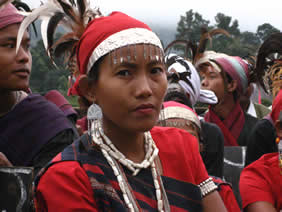 We can see from the article which Syed Zubair Ahmed wrote about the Khasi in New York Times February 18, 1994 “What do men want” that the matriliny continues among this 800,000 strong people.
We can see from the article which Syed Zubair Ahmed wrote about the Khasi in New York Times February 18, 1994 “What do men want” that the matriliny continues among this 800,000 strong people.
According to the article, a men’s right organization was founded. It says that women are overbearing and dominating. Men complain: “We are sick of playing the roles of breeding bulls and baby-sitters.” “We have no lines of succession. We have no land, no business.” The husband of the youngest daughter moves into the family house. Women say that they prefer to marry outsiders because their own tribesmen tend to be irresponsible in family matters.
A Khasi child takes the surname of the mother.”We Khasis tend to underestimate the contributions of our fathers to the family. Our fathers do a lot, but the credit goes to the mothers.”
However, Khasi men had tradionally important duties as hunters and defending the community in case of war. The government administration is solely the responsibility of Khasi men. Important questions and decisions are discussed among all clan members, and most Khasi men feel that their opinions are taken into consideration. The elder men of the tribe support the fairer sex.
“The matriarchal system should not be changed, or it will destroy the moral values of the younger generation,” said Glorence Syiem Malngiang, a tribal king in the East Khasi hill district subdivision of Mawsynram. “We shall see to it that the custom continues,” he said. (Seema Hussain, The Week, India, Mar 21, 1999)
An astute source summarized some essential Khasi attributes as “The political power and planning is all with the men, on the political level, women are not even invited to come to the community halls. They inherit the name and the wealth though. Has to do that in the wars with other tribes, there were hardly any men left, so the house etc. had to be inherited by women…”
Alternative social relations and organizations
Hunter-gatherers, North Africa, West Africa, Arabia, Ancient Mediterranean, Pacific, Asia, America, Europe
Societies which are not patriarchal can be found all around the world. There are numerous accounts from different societies of women negotiating, contesting, exercising and holding power as autonomous agents and individuals rather than as dependents or subordinates of men.
It may be better to speak of egalitarian socialities rather than of egalitarian societies in these cases.
For a more comprehensive discussion of power and gender, see
Peggy Reeves Sanday In Pacific Studies. Vol. 20, No. 3, pp 105-112,
and
Susan Kent: Egalitarianism, equality, and equitable power in Sweely, Tracy L. (editor) 1999. Manifesting Power. Gender and the Interpretation of Power in Archaeology. Routledge, London.
Many societies would not recognize the Eurocentric dichotomies of patriarchy/ matriarchy, woman & nature and man & culture. Gender roles and power relations may be of little importance, or they may be negotiable in individual cases. Sex is only one qualifier among many others.
Hunter-gatherers
One of the most studied cases of hunter-gatherers are the San (!Kung) of Kalahari desert in Botswana and Namibia. They are egalitarian to the extreme. No aggressive behaviour, exercise of power, or accumulation of wealth are tolerated. Autonomy of individuals is highly valued. Like all aboriginal people, their culture and traditional economy are threatened by the global economy and local government’s “development” efforts.
Examples of very similar cases are the Hadza in Tanzania, the Huaorani and the Cuiva in South America, the Chukchi of Siberia, the Nayaka, Hill Pandaram , Paliyan, and the Andaman Onge in India, the Agta and Batak in Philippines, the Batek in Malaysia, the Pintupi, Warlpiri and Cape York peoples in Australia. (See the Cambridge encyclopedia of hunters and gatherers. Cambridge University Press. 1999)
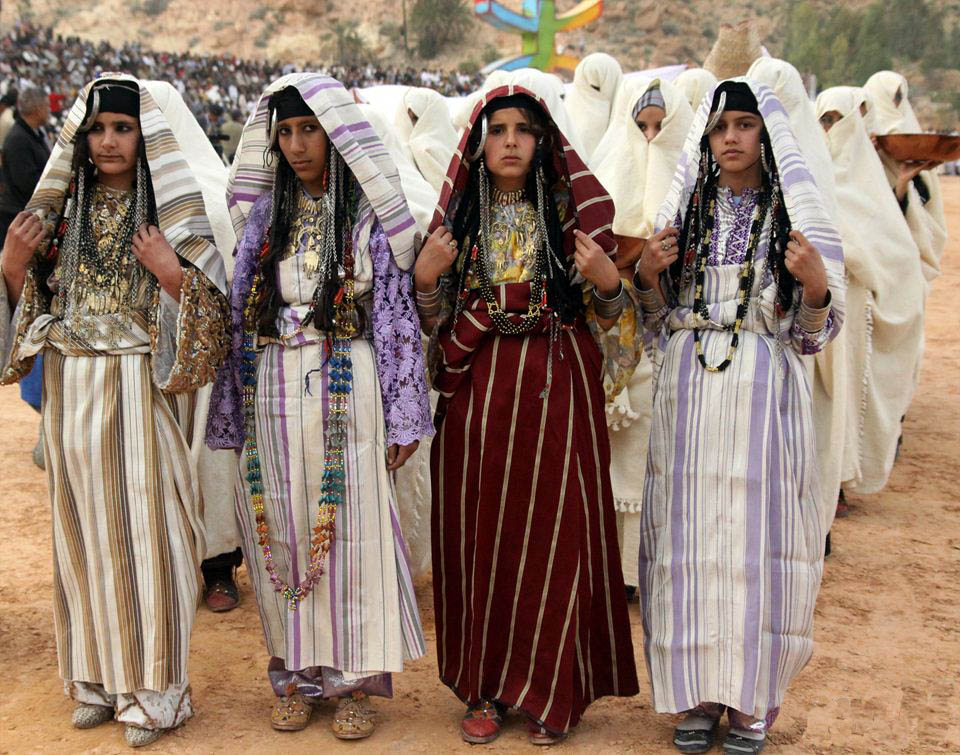
North Africa
Berber peoples
When Arabs first attacked ‘Tunis’ in 683, the Berber resistance leader Kosaila, a woman, defeated them but was killed in a battle three years later in 686. She was succeeded by another woman of Jerawa tribe, whom the Arabs called Kahina (= sorcerer), an old widow who lived 127 years according to the legend. Even today, the Berber peoples of North Africa set great store by prophesies that reveal the future. It is not unusual for these prophesies to be made by a prophetess who is assumed to have supernatural powers.
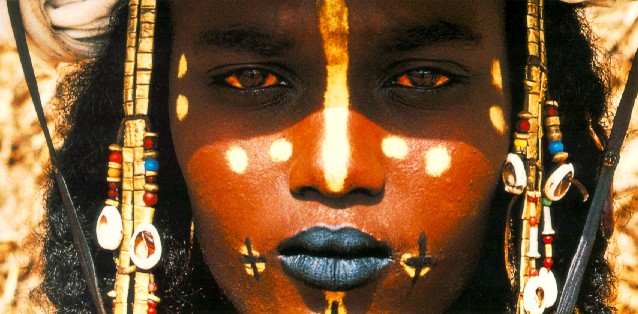
The Tuareg (Twareg)
“It is highly unusual in the history of writing in that it is confined to women. Tuareg society is in fact matriarchal, and there, as elsewhere, literacy represents power.” (Jean, Georges. Writing, the story of alphabets and scripts. 1992)
Among the Tuareg, women enjoy freedom of choice in sexual involvement and actively pursue romantic preferences. They may have male visitors when their husbands are absent. Women also retain custody of their children after divorce.
Children are the financial responsibility of their fathers but they are considered by nature and by custom as belonging to their mothers. The tents and their furnishings are the personal property of the women. When a woman wants a divorce, she takes her bed (the only bed in the tent) to her mother’s place.
If she is real serious, she takes the tent as well and the husband has no place where to sleep, he must find shelter with his mother.
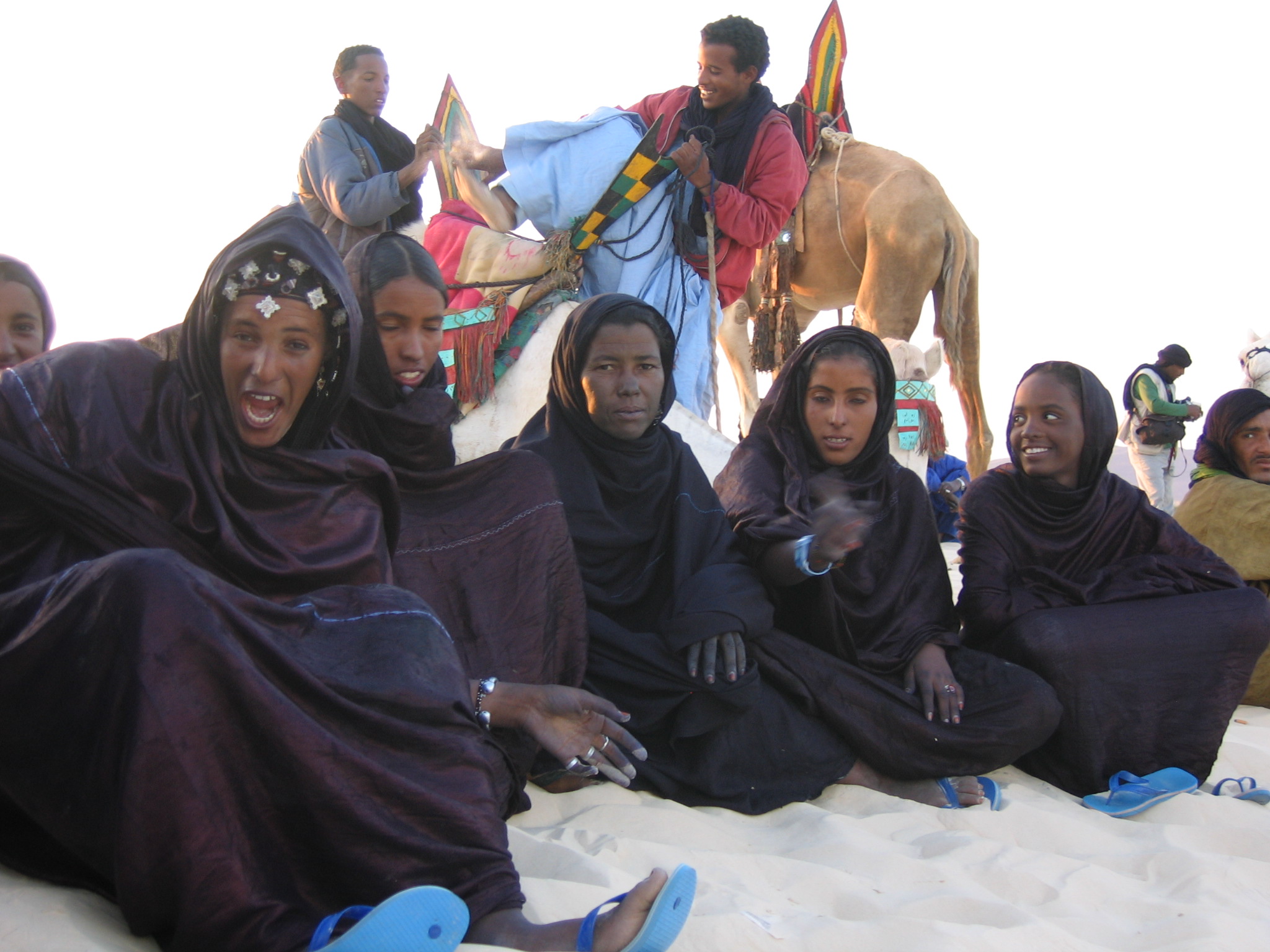
The Saharawi from the Western Sahara respect experienced women. In most Muslim cultures, a divorced woman becomes a social pariah. But in Saharawi culture she is both more respected than an unmarried virgin, and more alluring. “Clearly, a woman who already has experience is better than a woman who you have to train in matters of relations with men,” a newly married third husband explains.
Divorce is not usually acrimonious in the Sahara, the couple usually agree it is no longer working and the husband will leave. Three months after the divorce, the ex-wife will hold a party to celebrate her new-found single status. But it does not last for long. A new suitor usually presents himself at the party. It is the result of years of nomad life, when men went off to wonder and women assumed responsibility for the camps.
“In Saharawi culture we don’t regard there as being any difference between girls and boys in childhood.” Saharawi women also take an active role in their political struggle. In old Saharawi tradition it is women who take responsibility. They can be ministers and ambassadors.
West Africa
Bijagós islands off the coast of Guinea Bissau have a matriarchal family structure; that is, the woman is the head of the family and has the right to choose and divorce her husband at will. The husband has no claim to the children and they bear their mother’s last name. The bush and the sea are predominantly the domain of the men, while the entire area of the village, the education of children and spiritual matters are the main responsibility of the women. The Bijagós are known for their elaborate religious rites and ceremonies, cosmogony and sculptural art.
The Hausa areas of West Africa were ruled by a dynasty of queens, 17 in all until around 1050 CE when it split into seven states. Later a conqueror queen of Zazzau state, Aminatu (ruled 1536-1573) expanded her state. According to the legend, she took a new lover in every town she conquered and the man was beheaded the next morning. At present time, Hausa women are subordinate to their husbands.
K. Anthony Appiah wrote in NY Times in Dec 1999: “My uncle, the king of Ashanti, died earlier this year, but I can attest that the ceremonial at his funeral and at the installation of his successor was a vast, impressive occasion (…).
This time, however, the people of Ashanti were able to review the royal candidates for succession on television, before the queen mother made her choice.”
In Togo, women are in charge of much of the trade. The political power rests with men, but women act as religious leaders.
Arabia
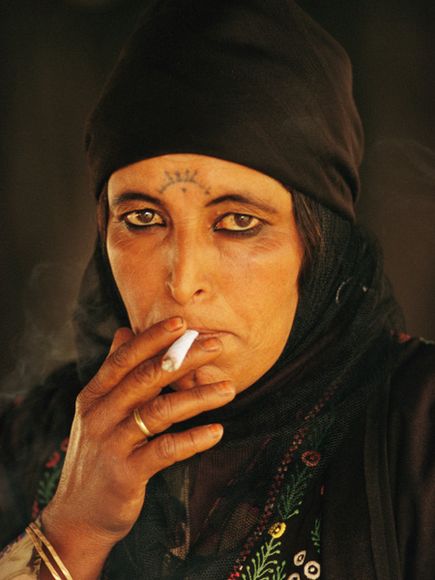
The Bedouins
The Finnish explorer C.A.Wallin traveled widely in Egypt and Arabia in the 19th century. He tells how Bedouin women in the town of Dôfi, northern Arabia, “henpeck cruelly their menfolk, sit unveiled among men, quibbling and smoking their short pipes.” Before the time of Prophet Mohammed, women could freely choose their husbands, even have several husbands if they wished.
Yemen had several significant female rulers, the most famous of which is Belqis, Queen of Sabah. There were two important ruling queens still in Islamic times, Malika Asma and her daughter-in-law Malika Urwa.
The Ancient Mediterranean
Women in ancient Egypt seem to have enjoyed the same legal and economic rights as men.
Diodorus of Sicily, who had visited Egypt some time between 60 and 56 BCE, writes that the Egyptians had a law “permitting men to marry their sisters” and adds that “it was ordained that the queen should have greater power and honour than the king and that among private persons the wife should enjoy authority over her husband” (Book I, 27).
Power in Ancient Egypt descended through the mother’s side of the royal family. The queenship was a mortal manifestation of female power and the feminine prototype, while the pharaoh represented the power of the male and the masculine prototype. The roles of the male pharaoh and the female queen were interpreted as one element in a system of complementary dualities.
For an on-line discussion of the subject, see the site Images of women in ancient art
See also:
Barbara S. Lesko, Women and Religion in Ancient Egypt:
http://www.stoa.org/diotima/essays/
Some women assumed the power of pharaoh, the most important of them queen Hatshepsut, who ruled from 1503 to 1483 BCE. She undertook large construction projects, and developed trade and agriculture. Her rule was known as a prosperous period, but her successor Tuthmosis III let destroy many of her statues and remove inscriptions which commemorated her deeds – or replaced her name with his own or her predecessors’.
During the Ptolemaic period, Egypt had two important queens of Greek ancestry, Arsinoë and Cleopatra.
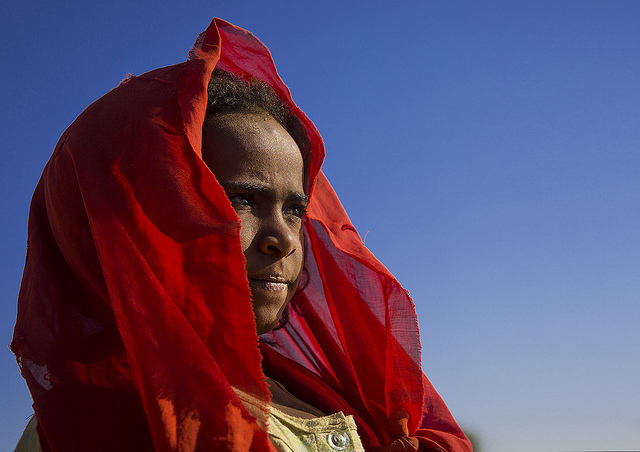
The great Meroë civilization South of Egypt, south of Nile cataracts in Nubia. from around 300 BCE till 2nd century CE had many women leaders, so many that it was believed there were no male rulers at all. Egyptians called the land Kush. The third ruler was the huge queen Bartare 284- 275 BCE, whose tomb in a pyramid has been found.
The Etruscan society
The Etruscans were “native” to Italy, and their kingdoms flourished before the Roman expansion. Contemporary accounts and their art indicate that Etruscan women held equal status with men, and they were allowed to socialize freely. Later the stress was on the married couple and their union.
The Pacific
Vanatinai of Sudest island in the Coral Sea: they are an egalitarian society without chiefs or dichotomic gender ideology, male and female tasks overlap greatly. Children belong to a matrilineage, and gardens belong to women. Women figure prominently in traditional exchange activities where women have equal opportunities of access to the symbolic capital of prestige derived from success in exchange. Lepowski has published “The Fruit of the Motherland” about the Vanatinai.
Samoa and Tonga
Nagovisi of Bougainvillea (See top of page for more information)
Traditionally, girls and women of rank enjoyed almost godlike veneration. It was not only through their prestige that they had great influence over their husbands and relatives and through them, over affairs of state, but titles and offices, even the throne were open to them. The four highest titles in all Samoa, traced through female ancestral connections, once came under the rule and authority of one person who was a woman, Salamasina, AD 1500, held these titles.
Normally, there are many more male chiefs than female. In order for a titleholder to be politically influential today, he must keep the support of his sacred sister. Her veto power within the descent group’s affairs still makes her a political ally or foe. Politics is the arena for men, and religion for women. Sisters had a higher status than their brothers, moreover, young boys prepared the food for old men.
Marquesas islands
The Polynesian societies were highly stratified chiefdoms where the aristocracy and commoners had very different rights. They were known for the sexual freedom and elaborate ritual practices, for example the kapu, taboo system of avoidance and sacred. On the Marquesas (site in French) some women, mainly of high rank, had a primary husband vahana haka’iki and, in addition, one or more secondary husbands, pekio, who were to some extent domestic servants.
Cases of polyandry were varied: There were political marriages of chiefly women to infant husbands or; Men who had been the woman’s partners during adolescence remained with her when she married an older and more wealthy man or; Two men sometimes jointly offered themselves to a woman, who chose one as vahana haka’iki and the other as pekio.
Asia
India: Kerala state
The matrilineal system in Malabar is based on the Tarwad-house, where all the matriclan lives. It is managed by karanavan, who is usually the eldest male; but in absence of a capable male, a woman could be a karanavan; his duties include economic management and ceremonial duties. Respect for elders is strong.
“In Malabar society there was a preponderance of female celebration. The Tarwad always bestowed greater attention to the females …” There has been speculation about the starting of a matrilineal system, but according to the present knowledge it can be traced back as early as historical records exist. Even now women in Kerala occupy very important positions in all walks of life, in fact women in Malabar enjoy equal rights and privileges with men.
India: Lakshadvip islands and Minicoy
The origin of people and language of these small islands is supposed to be in Kerala. Population is originally Hindu but Islamic since many centuries. Descent is traced through the mother and property is divided equally among the children of a woman. The matrilineage Taravad is exogamous.
Birth in a Taravad gives a member the right in share of the Taravad property consisting usually of land, trees, boats and buildings. This right passes through female members; a male member has only usufructuary rights over the Taravad property. Pattern of residence is duolocal: husband makes night-visits to his wife.
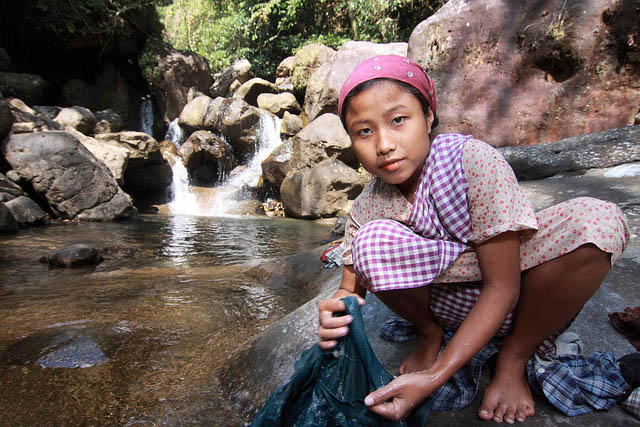
The Tibetans
Tibetans traditionally practised polyandry where one woman had more than one husband. The marriage could have many forms: either two or three brothers married the same woman, and the eldest brother was the head of the household; or a heiress took more than one husband to live in her house in which case she was the head of the household. Also monogamy was possible.
China: The Mosuo (See top of page for more details)
Some groups of the Mosuo (also called Moso, classified by the Chinese as Naxi, or Na-shi) living in the hills of Yunnan province have matrifocal residence where the lover only makes night-visits to his “wife”. Children stay with their mothers, and have a close relationship with their uncles. Also adult men work on their mother’s land.
Property is inherited through female line. The eldest or most competent woman in the house is the head of the household, “dabu”. She keeps the purse strings for all family members, and makes all economic decisions.
An enchanting life story of a Mosuo woman is told in “Leaving Mother lake. A Girlhood at the Edge of the World.” by Yang Erche Namu and Christine Mathieu. Little, Brown and Company, 2003.
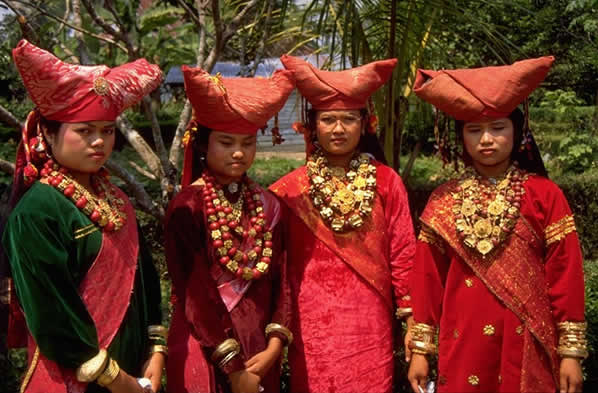
Indonesia, Sumatra: Minangkabau
The Minangkabau are the largest and most stable matrilineal society in the world today. Numbering some 4 million people in West Sumatra, the traditional homeland of their culture, the Minangkabau are the fourth largest ethnic group in the archipelago. They are a proud people well known in Indonesia for their literary flair, democratic leanings, business acumen, and “matriarchal” ways. The matrifocality in Minangkabau society means that families live in matrilineal longhouses and all ancestral property goes to women. Women are the guardians of economy, they keep the key to the rice house.
Young boys and divorced husbands sleep in Mosques. Men leave their homes when married but a woman cannot leave her house. A woman stays in the place where she was born and upholds adat, the traditional law. Women are considered to be weak and that is the reason why they must be given rights. The moral responsibility resides in women.
Men are in fact proud of their independence. Men deal with formal political matters and act as village leaders. Matrilineage and household are conceived as the centre of power. The legends tell about a queen, Bundo Kanduang, who is a central figure in the folklore but her historicality is unclear.
To read more, see: Women at the Center: Life in a Modern Matriarchy
Evelyn Blackwood has published Webs of Power: Women, Kin, and Community in a Sumatran Village where she argues that the Minangkabau women have wide-ranging power in their lineages and communities.
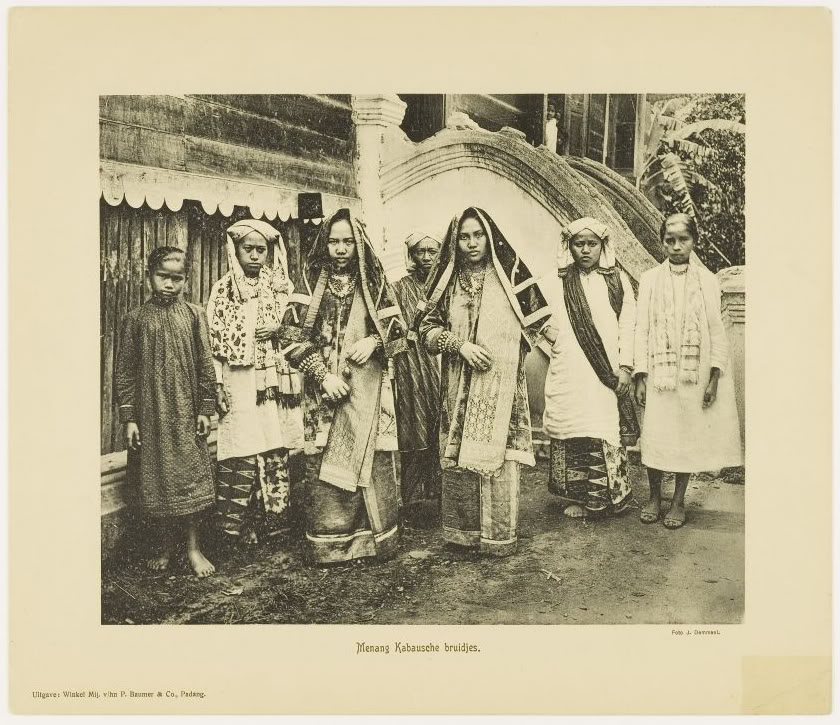
Japan: Ryukyu islands
In the Ryukyu kingdom, on Okinawa, women were religious leaders as shamans and priestesses, presiding all ritual life except mortuary rituals. Secular power was devided between the king and male officials, and corresponding female officials. The samurai envoys from the Japanese island of Kyushu got very annoyed when they had present their credentials to the women of the court in 1666. Women priestesses still function today in Ryukyu villages.
America
Mexico: Tehuantepec Zapotec
The Handbook of Middle American Indians, vol 7 refers to “the notorious power of isthmus Zapotec women” who call themselves Tehuanas. Women are heads of households, control the purse and represent the community to outsiders. Only women go to the market. “In the isthmus bantering in the marketplace is the most notorious pastime of Tehuanas, and one which causes much laughter, especially if the object of fun is a man.”
The writer is offended by use of nicknames like crabfoot, turtle, city woman, marimba teeth, little pig, big testicles.
There is strong solidarity among all the women, and elders are highly respected. The majority of native curers are women. There are some clues that the culture was already strongly matrifocal before the Spaniards arrived. In 1553 Princess Magdalena, the daughter of the ruler Cosijopii, donated to the Dominicans “the salt beds of Tehuantepec, her fields, a fruit orchard half a league in length, her recreational baths consisting of crystal springs which water the orchard.”
At that time, Magdalena’s father and two brothers were still living. During the Tehuantepecan Insurrection 1660, women were reported to take actively part.
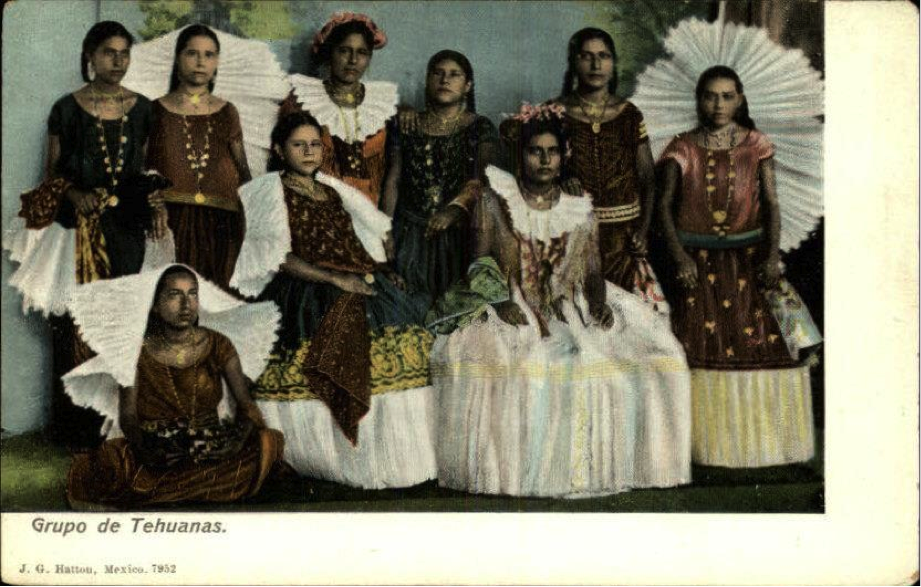
North America: Cherokee
The Cherokee were matrilineal with a complex society. Cherokee women had many rights and privileges other than domestic duties. Not only did married women own property, such as homes, horses, cattle and fields of growing crops and fruit trees, but they also participated in both the fighting of wars and the Council of War, and sat with the Civil Council of Peace. Lineage was traced through the women’s clan.
The Women’s Council was influential having for example power over captives’ lives.Their female warrior chief had the title of Beloved woman. The last Beloved woman, Ghighau, Nancy Ward, resigned her office in 1817. She had earned her title by taking the weapons of her deceased husband and participating into a battle. She was the head Beloved Woman of Chota, the oldest, “mother” town of Cherokee, and in this position she tried to negotiate and maintain peace with the whites, which proved impossible. It took 170 years before the Cherokee again had a female supreme chief, Wilma Mankiller, who was elected in 1987.
Canada: Innu (Montagnais)
The Innu of St. Lawrence Valley who were called Montagnais-Naskapi by the missionaries caused head-aches to the Jesuits. Let brother Fr. Paul Le Jeune report of his troubles: “the women have great power.. A man may promise you something and if he does not keep his promise, he thinks he is sufficiently excused when he tells you that his wife did not wish him to do it.”
“Men leave the arrangement of the household to the women, without interfering them; they cut and decide to give away as they please without making the husband angry.
I have never seen my host ask a giddy young woman that he had with him what became of the provisions, although they were disappearing very fast.” “They endure in the least those who seem desirous of assuming superiority over the others, and place all virtue in certain gentleness or apathy.”
“They imagine that they ought by right of birth, to enjoy the liberty of wild ass colts, rendering no homage to anyone whatsoever, except when they like. They have reproached me a hundred of times because we fear our Captains, while they laugh at and make sport of theirs. All the authority of their chief is in his tongue’s end, for he is powerful insofar as he is eloquent; and even if he kills himself talking and haranguing, he will not be obeyed unless he pleases the Savages.”
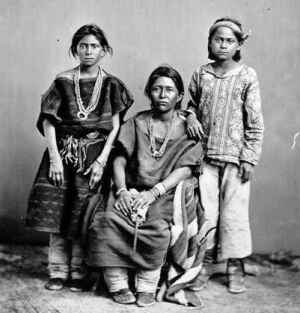
North America: The Iroquois and Huron
The Iroquois consisted of five groups whose own collective name was Haudenosaunee (= the Longhouse). “In each clan, each individual and distinct matrilineage ohwachira has one person who acts as representative for it. The women choose them and are often in this position themselves.”
The bestowal of an office was not irrevocable; the women retained the right to replace a leader who failed to meet their expectations. One of the matrons in each ohwachira presided over her kin group and with counterparts from other longhouses constituted the female leadership of a clan segment.
One could see a gender division of political labor: women were dominant within the village and its surrounding fields while men dealt with the outside world. But in fact, the Iroquois lived in a democratic near-anarchy which a late 17th century Mohawk leader summarized to the officials at Albany: “Brethren you know that we have no forcing rules or laws amongst us.” (List of sources about North America)
North American Southwest: The Pueblo, Hopi and Zuni
These societies are characterized by high status and economic independence of women, and matrilineal and matrilocal residence.
Pueblo: “Power among tribal people is not perceived as political or economic, though status and material possessions can and often do derive from it.
Power is conceived of as being supernatural and paranormal. It is a matter of spirit involvement and destiny. Woman’s power comes automatically, by virtue of her femaleness, her natural and necessary fecundity, and her personal acquaintance with blood.” Paula Gunn Allen
Zuni: Men need inititation ceremonies into religion but women initiate themselves through the sacredness centered in their bodies: through menstruation and childbirth they apprehended the mysteries of life and death at their source. The Zuni refer to earth as mother, corn plants as her children and game animals as fathers. They believed that they lived in the center of the world.
“Navajo culture, which is matriarchal, gives women a sense of power and independence.” “In Navajo religion and culture, there is an emphasis on how you relate to everything around you. Everything has to be measured, weighed and harmonious. We call it nizhoni – walking in beauty.” Dr Lori Cupp
Europe
The Saami, reindeer herders of Lapland
“In the traditional Saami society, the way of grandmothers dominate. In the reindeer economy it is very clear that an elderly woman holds the household together and decides what should be done. She decides particularly the marriages and clothing.” N-A Valkeapää, Saami writer and singer
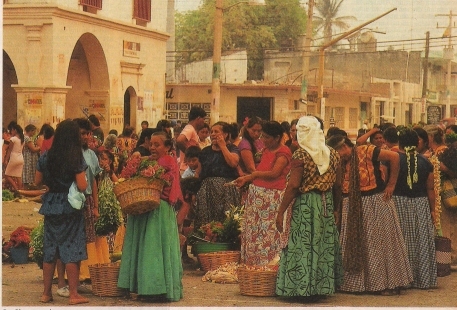
Heliotricity Reviews
9/18/2018